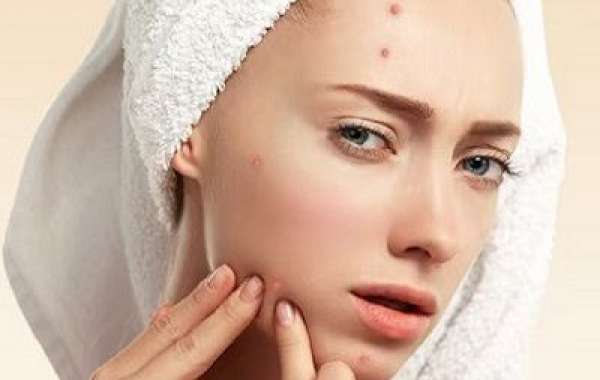Acne scars in Islamabad can be a lasting reminder of past breakouts, often affecting confidence and self-image. The good news is that advances in skincare have made it possible to reduce the appearance of acne scars and reclaim smooth, even skin. From in-office treatments to effective at-home options, here’s a look at some of the best methods for acne scar removal.
Understanding Acne Scars:
Before diving into treatments, it’s essential to understand the types of scars acne can leave behind:
Atrophic Scars: These indented scars form due to tissue loss and include:
- Ice Pick Scars: Narrow, deep scars that resemble tiny holes.
- Boxcar Scars: Wide, U-shaped scars with defined edges.
- Rolling Scars: Broad depressions with a wavy appearance.
Hypertrophic Scars: These raised scars are caused by excess collagen and are more common on the chest and back.
Each type of scar may require a different approach to achieve the best results, so consulting with a dermatologist can help tailor a treatment plan to your needs.
Top Professional Acne Scar Removal Treatments:
If you’re looking for noticeable results, these professional treatments have been proven effective in reducing acne scars and promoting smoother skin.
1. Laser Resurfacing for Smoother Skin Texture:
Laser resurfacing is one of the most effective treatments for deeper acne scars. Using either an ablative (removing outer layers of skin) or non-ablative laser (promoting collagen without removing skin layers), laser treatments can significantly improve skin texture and tone over time. Fractional CO2 lasers, for example, are highly effective for treating atrophic scars by stimulating collagen production.
- Benefits: Smooths skin texture, reduces scar depth, and encourages collagen growth.
- Ideal for: Moderate to severe atrophic scars.
2. Microneedling for Collagen Stimulation:
Microneedling, sometimes combined with platelet-rich plasma (PRP), involves using tiny needles to create micro-injuries in the skin. This triggers the body’s natural healing process, promoting collagen production and gradually improving skin texture. Many dermatologists recommend microneedling for patients with rolling scars or boxcar scars, as it helps plump the skin over time.
- Benefits: Stimulates collagen, can improve skin tone and texture, minimal downtime.
- Ideal for: Mild to moderate atrophic scars.
3. Chemical Peels for Skin Renewal:
Chemical peels are a popular option for mild to moderate acne scars. By applying a chemical solution, this treatment exfoliates the top layer of skin, encouraging new skin cells to surface. Salicylic acid and TCA (trichloroacetic acid) peels are commonly used for acne scars, as they help fade discoloration and improve skin smoothness.
- Benefits: Reduces dark spots, smooths out shallow scars, and improves skin tone.
- Ideal for: Mild scars and post-inflammatory hyperpigmentation.
4. Dermal Fillers for Instant Results:
For people seeking immediate improvements in their skin’s appearance, dermal fillers offer a quick and effective solution. Hyaluronic acid fillers, such as Juvederm, can fill in indented scars, creating a more even skin surface. However, this solution is temporary and requires maintenance treatments every few months.
- Benefits: Immediate results, smooths indented scars, no downtime.
- Ideal for: Deep boxcar and rolling scars.
5. Subcision for Releasing Tethered Scars:
Subcision is a technique where a needle is used to break up the fibrous bands anchoring the scar to underlying tissue. This release allows the skin to rise to a more even level. Often combined with fillers, subcision is particularly effective for rolling scars that cause a wavy appearance on the skin’s surface.
- Benefits: Provides long-lasting results for certain scars, improves skin texture.
- Ideal for: Rolling scars.
At-Home Solutions for Mild Acne Scarring:
While in-office treatments often yield the most significant results, there are also effective at-home options that can improve the appearance of mild acne scars over time.
1. Retinoids for Skin Renewal:
Retinoids, a form of Vitamin A, are widely used in acne scar treatment as they encourage skin cell turnover and reduce hyperpigmentation. Over-the-counter options like retinol are helpful for mild scars, but stronger prescription retinoids may be necessary for more significant results.
- Benefits: Reduces dark spots, smooths skin texture, and encourages cell renewal.
- Ideal for: Mild scarring and discoloration.
2. Vitamin C for Brightening:
Vitamin C serums can lighten dark marks left by acne, known as post-inflammatory hyperpigmentation. Though it may take time, consistent use of Vitamin C can make a noticeable difference in evening out skin tone and reducing discoloration.
- Benefits: Fades dark spots, improves skin radiance, and provides antioxidant protection.
- Ideal for: Hyperpigmentation and mild scarring.
3. AHAs and BHAs for Exfoliation:
Alpha hydroxy acids (AHAs) and beta hydroxy acids (BHAs) exfoliate the top layer of skin, which helps in minimizing the appearance of shallow scars and uneven texture. AHAs, such as glycolic acid, are ideal for surface-level issues, while BHAs, like salicylic acid, penetrate deeper and work well for oily, acne-prone skin.
- Benefits: Smooths rough skin, clears pores, and reduces discoloration.
- Ideal for: Mild to moderate acne scars.
Combining Treatments for Optimal Results:
In many cases, combining treatments yields the best results. For example, a dermatologist may recommend microneedling with PRP followed by laser resurfacing for more significant improvements. Combining treatments allows patients to address various types of scars and achieve a more even, clear complexion.
Final Thoughts: Embracing Clearer Skin:
Acne scars may be challenging, but modern treatments have made it possible to reveal smoother, clearer skin. Working with a dermatologist can help you create a personalized treatment plan that suits your skin type and scar severity. With the right approach and a bit of patience, you can minimize acne scars and boost your confidence in your skin.
For more information visit Dynamic Clinic PK




